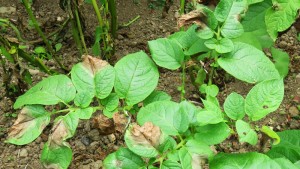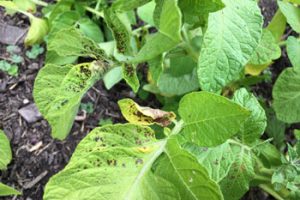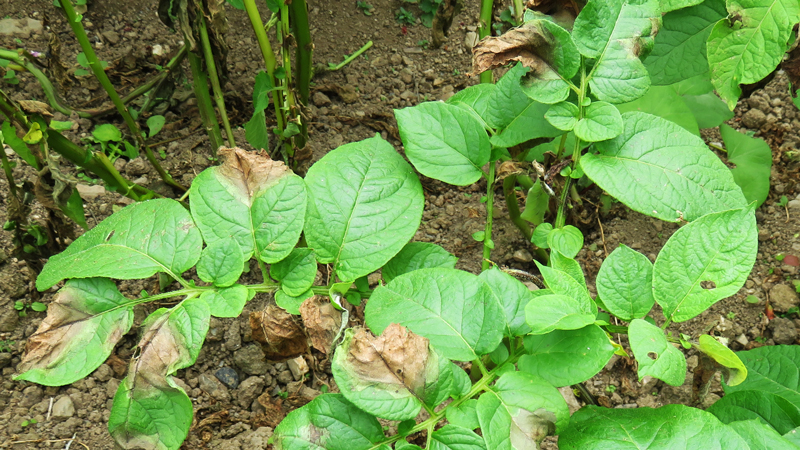Potatoes are quite prone to fungal diseases like blight. If yours have been affected you can still usually harvest your spuds, so don’t panic. But you will need to take action!
 BLIGHT
BLIGHT
Check your potato plants regularly for brown patches on the leaves. This is the first sign that they have blight. If it’s more advanced, you may see brown patches on the stems as well, and the leaves will have started to rot. If left unchecked it can affect the tubers themselves.
 VERTICILLIUM WILT
VERTICILLIUM WILT
The fluctuations between cool and hot temperatures over the past few weeks is the perfect conditions for this soil borne disease to develop. Foliage will start to turn yellow (and then brown) towards the base of the plant, and plants wilt. It’ll affect your crop eventually.

NUTRIENT DEFICIENCIES
Smaller brown spots like this are more likely to be a nutrient deficiency, so before you panic about blight, we’d recommend trying a liquid feed to put things right. First remove badly affected foliage, then apply the liquid feed and keep an eye on the plants for a few days. If things worsen and the spots start to spread and look more like blight, then of course treat them accordingly (see below) But if the new leaves come through nice and green, it’s good sign that things are back to normal.
What to do if your potatoes have a fungal disease?
By checking regularly and acting at first sign of infection you might be able to save your crop. Remove affected foliage and get rid of it (burning it is best). Then, try removing a few more of the leaves to allow air to circulate better between plants. Keep an eye on things and with any luck you may have got it under control before it got too bad!
If the crop is badly affected, then it is best to cut off ALL the foliage at the base of the stems. Again, try and burn it or get rid of it in another way. You can leave the potato tubers in the ground for two weeks to let the potato skins harden and then dig them up.
How can I prevent it in the future?
- Use a liquid feed this summer to help re-balance the soil nutrients. This will help the soil to recover naturally.
- Add plenty of organic matter to the soil at the end of the season.
- Rotate crops next spring.
- Spacing is important for airflow to prevent the disease spreading, so make sure you plant your potatoes with plenty of space next year.
- Remove any yellowing/dying foliage as you see it to prevent things from started.

